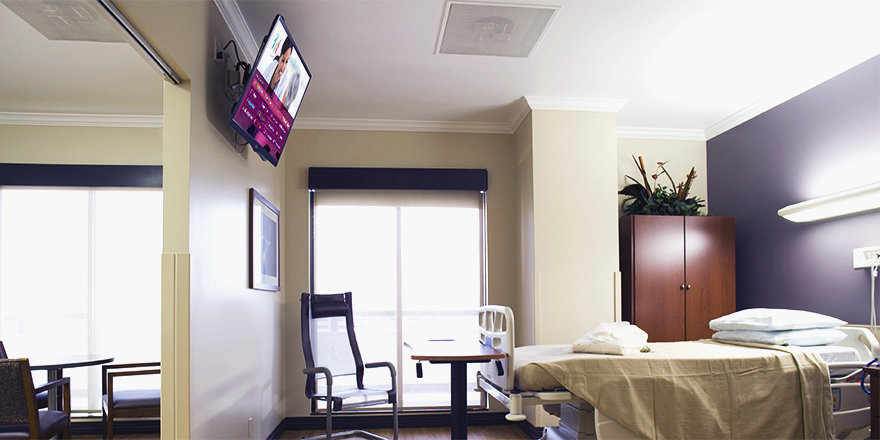
By Tom Mottlau
Director of Healthcare and Emerging Markets
LG Business Solutions USA
Sometimes, big changes in how we work and live are driven by technology. Think smartphones, for example. At other times, social change and technological innovation dovetail perfectly to help us reimagine what we do.
In healthcare, over the last decade, the focus on outcomes-based care has coincided perfectly with advances in network-based communication to open a new world of patient experience solutions that produce results for hospitals and the public. And with the coronavirus pandemic upending various aspects of healthcare delivery, this new breed of solutions, built on a foundation of secure, integrated networks and smart digital devices, can help healthcare providers meet the challenge.
“This idea of better providing services to patients, helping them stay informed and engaged during the course of their stay — educated about why they’re there, how they can get services and, ultimately, empowering them to be active participants in their care — has become the foundation of our software development,” explains Robin Cavanaugh, Chief Technology Officer at GetWellNetwork, a Bethesda, Maryland-based company that offers a family of solutions, including GetWell Inpatient, which creates personalized, digital workflows to engage patients in their care. “We’ve found innovative ways to deliver that experience on devices in the hospital environment.”
Chief among those devices is the in-room television. Along with the ubiquitous pillow speaker, the hospital TV tends to become the center of a patient’s world during a hospital stay. Until recently, the TV was a one-way entertainment medium. Today, it’s a smart, networked internet display capable of much more: entertainment, for sure, but also personalized education, information, interaction, and — increasingly — face-to-face communication.
“For so long, you’ve had this old TV mounted in the corner, offering little information and keeping patients somewhat disconnected from everything around them,” Cavanaugh says. “We’ve spent a lot of time trying to improve that experience, first by deploying capabilities in set-top boxes and now by aggressively integrating networked patient solutions into a new breed of smart TVs.”
Stay tuned. Next time we’ll detail a variety of personalized patient amenities that are supported by smart TVs in hospital rooms.